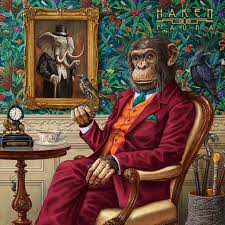Stamp: Beekeeping in Belarus (Belarus 2016)
Beekeeping in Belarus (Belarus 2016)
12 August (Belarus ) within release Beekeeping in Belarus goes into circulation Stamp Beekeeping in Belarus face value P
| Stamp Beekeeping in Belarus in catalogues | |
|---|---|
| WADP Numbering System - WNS: | WAD:BY041.16 |
Stamp is square format.
Also in the issue Beekeeping in Belarus:
- Stamp - Beekeeping in Belarus face value P;
- Stamp - Beekeeping in Belarus face value P;
- Mini Sheet - Beekeeping in Belarus face value ;
- Stamp - Beekeeper face value P;
- Stamp - European Honey Bee (Apis mellifera) face value P;
- Souvenir Sheet - Beekeeping in Belarus face value None;
|
Data entry completed
76%
|
|
|---|---|
| Stamp Beekeeping in Belarus in digits | |
| Country: | Belarus |
| Date: | 2016-08-12 |
| Size: | 45 x 45 |
| Perforation: | 13.25 by 13.25 |
| Format: | Stamp |
| Face Value: | P |
Stamp Beekeeping in Belarus it reflects the thematic directions:
Food is any substance consumed by an organism for nutritional support. Food is usually of plant, animal, or fungal origin and contains essential nutrients such as carbohydrates, fats, proteins, vitamins, or minerals. The substance is ingested by an organism and assimilated by the organism's cells to provide energy, maintain life, or stimulate growth. Different species of animals have different feeding behaviours that satisfy the needs of their metabolisms and have evolved to fill a specific ecological niche within specific geographical contexts.
Fauna (pl.: faunae or faunas) is all of the animal life present in a particular region or time. The corresponding terms for plants and fungi are flora and funga, respectively. Flora, fauna, funga and other forms of life are collectively referred to as biota. Zoologists and paleontologists use fauna to refer to a typical collection of animals found in a specific time or place, e.g. the "Sonoran Desert fauna" or the "Burgess Shale fauna". Paleontologists sometimes refer to a sequence of faunal stages, which is a series of rocks all containing similar fossils. The study of animals of a particular region is called faunistics.
Insects (from Latin insectum, a calque of Greek ἔντομον [éntomon], "cut into sections") are a class (Insecta) of hexapod invertebrates within the arthropod phylum that have a chitinous exoskeleton, a three-part body (head, thorax and abdomen), three pairs of jointed legs, compound eyes and one pair of antennae. They are the most diverse group of animals on the planet, including more than a million described species and representing more than half of all known living organisms. The number of extant species is estimated at between six and ten million, and potentially represent over 90% of the differing animal life forms on Earth. Insects may be found in nearly all environments, although only a small number of species reside in the oceans, a habitat dominated by another arthropod group, crustaceans. The life cycles of insects vary but most hatch from eggs. Insect growth is constrained by the inelastic exoskeleton and development involves a series of molts. The immature stages can differ from the adults in structure, habit and habitat, and can include a passive pupal stage in those groups that undergo 4-stage metamorphosis (see holometabolism). Insects that undergo 3-stage metamorphosis lack a pupal stage and adults develop through a series of nymphal stages. The higher level relationship of the Hexapoda is unclear. Fossilized insects of enormous size have been found from the Paleozoic Era, including giant dragonflies with wingspans of 55 to 70 cm (22–28 in). The most diverse insect groups appear to have coevolved with flowerin plants.



